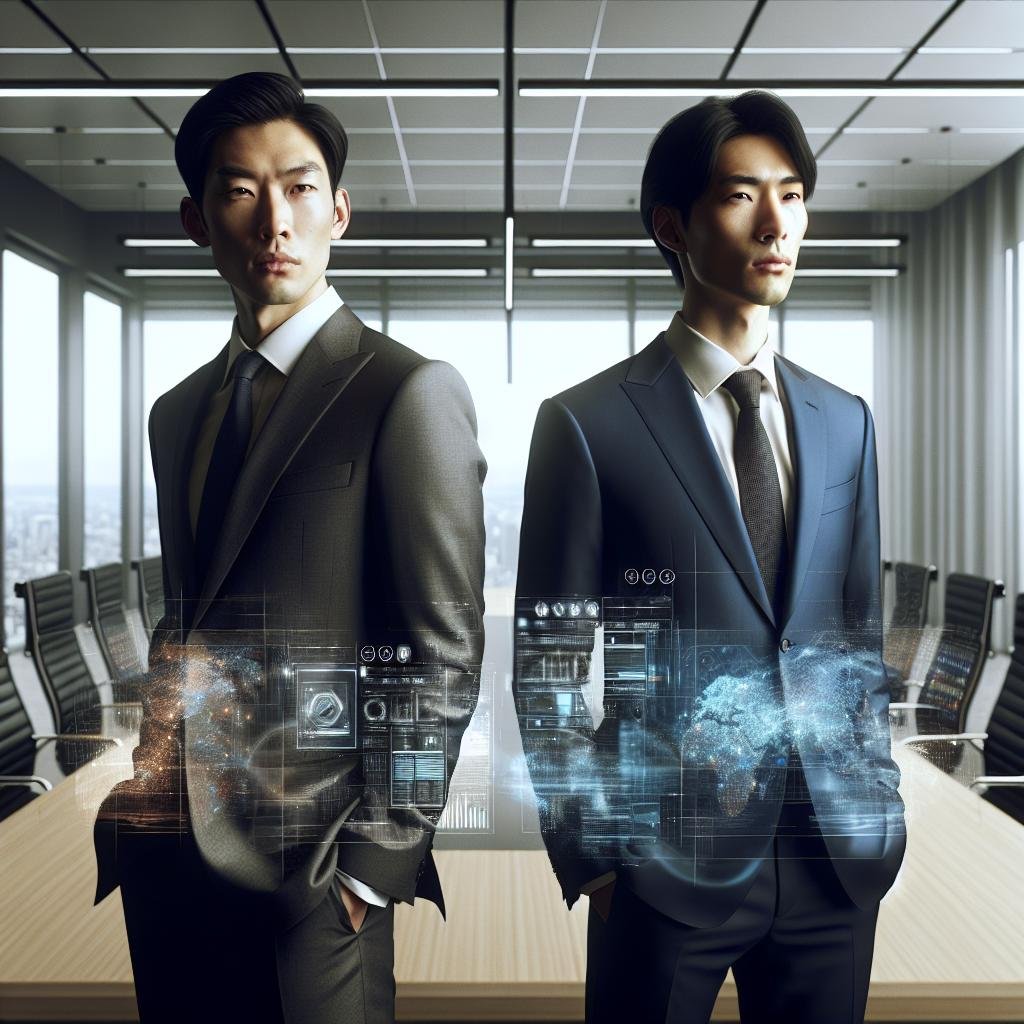
OpenAI Restructuring Rift: Expert Analysis on Microsoft Standoff
A significant power struggle is unfolding between OpenAI CEO Sam Altman and Microsoft CEO Satya Nadella over OpenAI’s proposed restructuring plans. This tension threatens the close partnership between the two organizations that has defined much of AI’s recent development landscape. According to multiple sources familiar with the situation, Microsoft may exercise its contractual rights to block OpenAI’s planned transformation into a for-profit entity, potentially derailing Altman’s vision for the company’s future.
The Growing Divide Between Tech Leaders
The relationship between Sam Altman and Satya Nadella has reportedly deteriorated in recent months as OpenAI pushes forward with plans to restructure. What began as a harmonious partnership with Microsoft investing billions into OpenAI has evolved into a complex power dynamic where both leaders are increasingly at odds over the future direction of artificial intelligence development.
Microsoft’s $13 billion investment in OpenAI initially seemed like a straightforward business arrangement. However, the relationship has grown more complicated as OpenAI seeks to modify its corporate structure. The current nonprofit structure includes a for-profit subsidiary that caps investor returns at 20 times their investment. Altman reportedly wants to remove this cap and create a new corporate entity that would give employees greater equity ownership and potentially pave the way for a future public offering.
Nadella and his team at Microsoft appear increasingly concerned about these changes. Their reservations stem from how such restructuring might impact Microsoft’s significant investment and their access to OpenAI’s technology, which now powers numerous Microsoft products.
Microsoft’s Contractual Leverage
The tension revolves around specific contractual stipulations that give Microsoft considerable influence over OpenAI’s governance decisions. Sources indicate that Microsoft’s contracts with OpenAI contain clauses requiring Microsoft’s approval for major structural changes or reorganizations.
These legal protections were wisely included by Microsoft to safeguard their massive financial commitment. They now serve as powerful leverage points in these delicate negotiations. As one insider explained, “Microsoft didn’t invest billions without ensuring they had proper safeguards in place.”
If Microsoft chooses to exercise these rights, they could effectively halt or significantly alter OpenAI’s restructuring plans. This situation creates a complex negotiation scenario where both parties must carefully consider their next moves.
The High-Stakes Battle for AI’s Future
This disagreement extends beyond a simple business dispute. It represents a fundamental question about who will control the future direction of artificial intelligence technology that impacts billions of users worldwide.
OpenAI began as a nonprofit research laboratory with a mission to ensure artificial general intelligence benefits all of humanity. Its gradual shift toward more commercial interests has raised questions about how its founding principles might evolve. Altman’s restructuring plans would potentially accelerate this commercial transformation.
Microsoft, meanwhile, has integrated OpenAI’s technology deeply into its product ecosystem. From Microsoft Copilot to Azure AI services, the company has built significant portions of its future strategy around access to OpenAI’s technology. Any changes to their arrangement could have profound implications for Microsoft’s competitive position in the AI market.
Timeline of the OpenAI-Microsoft Partnership
To understand the current tension, it’s helpful to look at how the relationship has evolved:
- 2019: Microsoft makes its initial $1 billion investment in OpenAI
- 2021: Microsoft gains exclusive license to GPT-3 technology
- 2022: Microsoft expands partnership with additional investments
- January 2023: Microsoft announces a multi-year, multi-billion dollar investment in OpenAI, reported to be around $10 billion
- November 2023: The OpenAI board briefly ousts Altman before reinstating him after employee revolt
- Spring 2024: Discussions about restructuring intensify, creating tension with Microsoft
Following Altman’s reinstatement as CEO, OpenAI’s governance underwent significant changes, with Microsoft gaining a non-voting observer seat on the board. This arrangement gave Microsoft greater visibility into OpenAI’s operations but still limited its direct control over major decisions.
The Financial Implications
The financial stakes in this dispute are enormous. OpenAI has been valued at around $80-$90 billion in recent funding discussions. Microsoft’s investment represents a significant portion of this value, and any restructuring could dramatically affect how returns are distributed.
For OpenAI employees, many of whom joined the company with the promise of equity that would eventually have substantial value, the restructuring represents a critical opportunity to secure their financial futures. Many staff members reportedly support Altman’s vision for the company’s evolution.
However, the tension creates uncertainty for other investors and potential partners. The roster of OpenAI investors has expanded beyond Microsoft to include venture capital firms and other strategic partners, all of whom are watching this situation closely.
Real-World Example
The OpenAI-Microsoft standoff mirrors similar tensions in tech history. Consider the infamous fallout between Apple and its CEO Steve Jobs in 1985. The board’s decision to sideline Jobs—who had a clear vision for the company’s future—ultimately proved disastrous for Apple until his return 12 years later. Similarly, the current dispute between Altman and Microsoft represents a critical juncture where leadership vision clashes with investor control. The difference here is that Microsoft, unlike Apple’s board in the 80s, holds significant contractual protections. As one tech analyst put it: “It’s like watching a high-stakes chess match where both players have nuclear options they’d prefer not to use.”
Technical and Practical Considerations
Beyond the business and financial aspects, there are significant technical considerations at play. OpenAI’s technology roadmap and development priorities might shift depending on how this restructuring resolves.
Microsoft has integrated OpenAI’s models into its products through API connections and specialized implementations. Any changes to the partnership could require technical adjustments to how these systems interact. Moreover, Microsoft has invested heavily in the computational infrastructure necessary to train and run OpenAI’s models.
For end users and developers who rely on these AI systems, the outcome of this dispute could impact:
- Pricing models for API access
- Rate limits and usage quotas
- Support for existing implementations
- The roadmap for future feature development
- Access to model customization options
Businesses that have built products on top of either Microsoft’s AI services or OpenAI’s direct offerings are watching closely to understand how their technology stacks might be affected.
The Broader AI Industry Impact
This dispute doesn’t exist in isolation. The AI industry is currently experiencing rapid evolution with numerous competitors vying for position. Companies like Anthropic, Google’s Gemini, and Meta’s open-source efforts all stand to be affected by the outcome of this standoff.
If the Microsoft-OpenAI relationship fractures significantly, it could create opportunities for competitors to fill gaps or form new partnerships. Alternatively, a resolution that strengthens the partnership could further consolidate their market position.
Several industry analysts suggest that this tension was inevitable given the high stakes involved in AI development. As one commented: “When you combine the most valuable technology of our generation with billions in investment and strong personalities, conflict is practically guaranteed.”
Potential Outcomes and Scenarios
As negotiations continue, several potential outcomes have emerged:
- Negotiated Compromise: OpenAI modifies its restructuring plans to address Microsoft’s concerns while still achieving some of Altman’s objectives.
- Microsoft Exercises Veto Power: Microsoft formally blocks the restructuring, forcing OpenAI to maintain its current structure or propose an alternative arrangement.
- Expanded Microsoft Investment: Microsoft increases its investment under terms that give it greater control while allowing some restructuring to proceed.
- External Resolution: Other investors or board members intervene to propose alternative solutions that satisfy both parties.
The most likely outcome, according to sources close to the negotiations, is some form of compromise that preserves the partnership while allowing limited restructuring. Both organizations have too much at stake to risk a complete rupture of their relationship.
Legal and Regulatory Implications
The dispute also raises interesting legal questions about the governance of AI companies and how control over this technology should be structured. Regulatory bodies around the world are increasingly focused on AI oversight, and any significant changes to OpenAI’s structure would likely attract regulatory attention.
In particular, antitrust regulators might examine how Microsoft’s influence over OpenAI affects competition in the AI market. The Federal Trade Commission has already shown interest in examining major tech partnerships in the AI space.
Intellectual property rights constitute another complex area. OpenAI’s models incorporate vast amounts of training data, and how these assets would be treated in any restructuring requires careful legal consideration.
The Human Element Behind the Corporate Dispute
While much of the discussion focuses on contracts and corporate structures, the human relationships involved play a crucial role. Sam Altman and Satya Nadella have different leadership styles and visions for AI development.
Altman has positioned himself as a visionary pushing the boundaries of AI capabilities, sometimes prioritizing rapid advancement over immediate commercial concerns. His leadership approach emphasizes technological breakthroughs and maintaining OpenAI’s position at the cutting edge of research.
Nadella, meanwhile, has transformed Microsoft into a more collaborative and partner-friendly organization during his tenure. His approach typically balances innovation with practical business considerations and sustainable growth models.
These differing perspectives have served the partnership well when aligned toward common goals but create friction when their priorities diverge. The personal dynamics between these leaders and their teams will significantly influence how negotiations proceed.
Looking Forward: What This Means for AI Users
For individuals and businesses that rely on AI tools from either OpenAI or Microsoft, the most important question is how services might change. In the short term, existing services will likely continue without disruption regardless of the corporate negotiations.
In the medium to long term, several factors could change:
- Development priorities for new features and capabilities
- How aggressively new models are commercialized
- The balance between open research and proprietary technology
- Pricing models for enterprise and individual users
- Integration options with other software ecosystems
Organizations planning their AI strategy should monitor this situation closely but avoid making reactive changes to their technology stack until the situation clarifies.
Conclusion: The Future of AI Collaboration
The tension between OpenAI and Microsoft represents more than just a corporate disagreement—it highlights fundamental questions about how advanced AI should be developed, controlled, and commercialized. The resolution of this dispute will likely influence how future AI companies structure themselves and their partnerships.
As AI becomes increasingly central to global technology infrastructure, the governance models and power dynamics established now will set precedents for years to come. Both Altman and Nadella understand this significance, which adds weight to their negotiations.
Whatever the outcome, this situation demonstrates that AI development exists at the intersection of technological innovation, corporate strategy, and human ambition. Finding the right balance among these factors remains one of the most significant challenges facing the industry today.
Have thoughts about how this standoff might affect AI development or your own use of these technologies? Share your perspective in the comments below, or explore our related articles on AI governance and industry partnerships.


